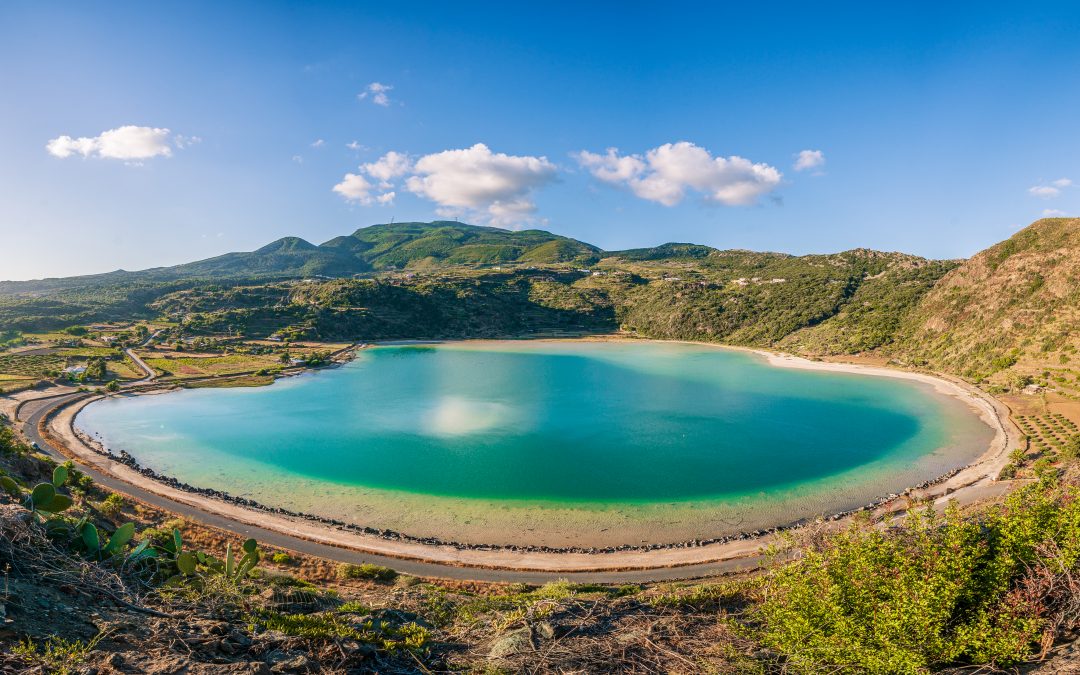Summer holidays are just around the corner and, if Italy and Sicily are on your agenda, Pantelleria is not to be missed during your trip.
This volcanic island, located between Sicily and Tunisia, is a gem in the Mediterranean Sea, stretching 80 km2 and featuring a breath taking landscape. As you reach the highest point of the island, about 800 metres above sea level, you can admire a sensational landscape, marked by an expanse of deep blue, coves on the sea, cliffs, and glimpses of lava.
Find this article in Italian and German.
Just as CuciniamoItaly describes in its article dedicated to this destination, Pantelleria is ‘an undefined island’, a place where different cultures and souls meet, having been a land of conquest of Greeks, Romans and Arabs in the past.
The place is worth visiting, not only for its unique landscapes and unique vegetation, but also for its good food and the local wines that are produced. Being close to two continents, Europe and Africa, the island offers a great diversity of dishes and use of ingredients, recalling Sicilian traditions and those of the Arab world.
Capers (PGI) of Pantelleria

Among its best-known fruit and vegetable products are the ‘Capers’ of Pantelleria. Thanks to its arid soil and dry climate, this volcanic island favours the growth of this exquisite flower.
The caper comes from a shrub, which often grows naturally among the island’s dry stone walls and is actually the flower bud of this plant that is harvested before it even opens. Their size is very small between 0.5 and 1.5 cm and they are green in colour. Capers are not to be confused with the cucuncium, which is instead the fruit of the caper flower. This is also eaten, but unlike the caper, it has a more elongated, curved shape, a longer stem and the seeds of the caper plant are contained inside.
Capers are grown on terraces exposed to the sun and harvested from May to October. As they have a very spicy and bitter taste when just picked, salt is then added to make them edible. This process consists in placing them in large barrels, covering them with coarse sea salt and tossed every 10 days. They are usually ripe and ready to eat after 20 days. The flavour of Pantelleria capers releases all the typical aromas of the volcanic island.
As well as being an excellent ingredient for seasoning, it is rich in Quercitin, a natural antioxidant with anti-inflammatory and even anti-cancer properties.
With Laura Bellù, founder of the CuciniamoItaly portal, we discover, in this video, an easy but handy trick to preserve them, consisting in making ‘caper powder’, ideal to use to add flavour to your dishes.
SEA BASS WITH POTATOES, CHERRY TOMATOES, OLIVES AND CAPERS

Instead on the CucinaimoItaly portal, chef Danilo Angé presents us a delicious and truly summery recipe oven-baked sea bass with potatoes, cherry tomatoes and capers.
This dish has the typical Mediterranean ingredients and flavours: fish, tomatoes, Taggiasca olives and capers. Easy to make and very tasty, an ideal and well-rounded dish for a summer dinner at home with friends.
For more tips on dream Italian destinations and tasty recipes subscribe to the CuciniamoItaly newsletter.

